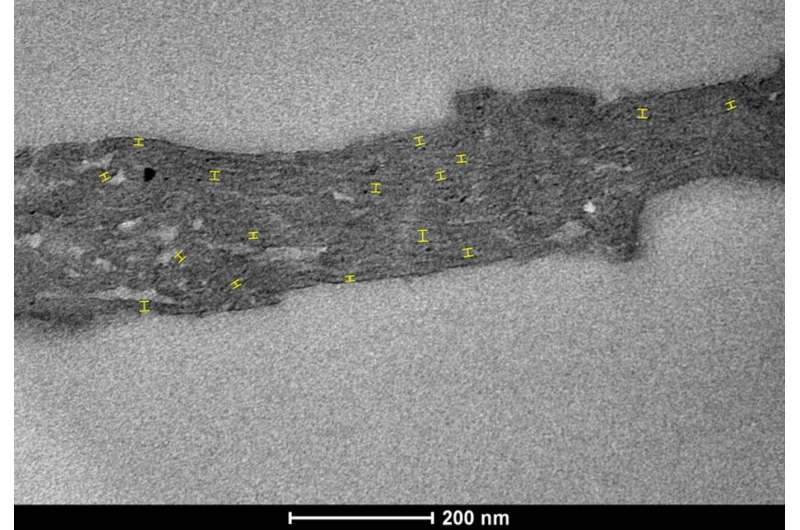This article has been reviewed according to Science X's editorial process and policies. Editors have highlighted the following attributes while ensuring the content's credibility:
fact-checked
peer-reviewed publication
trusted source
proofread
Australian fossil suggests photosynthesis evolved at least 1.75 billion years ago

The oldest evidence of photosynthetic structures reported to date has been identified inside a collection of 1.75-billion-year-old microfossils, a Nature paper reveals. The discovery helps to shed light on the evolution of oxygenic photosynthesis.
Oxygenic photosynthesis, in which sunlight catalyzes the conversion of water and carbon dioxide into glucose and oxygen, is unique to cyanobacteria and related organelles within eukaryotes. Cyanobacteria had an important role in the evolution of early life and were active during the Great Oxidation Event around 2.4 billion years ago, but the timings of the origins of oxygenic photosynthesis are debated due to limited evidence.
Catherine Demoulin, Emmanuelle Javaux and colleagues present direct evidence of fossilized photosynthetic structures from Navifusa majensis. The microstructures are thylakoids; membrane-bound structures found inside the chloroplasts of plants and some modern cyanobacteria. The authors identified them in fossils from three different locations, but the oldest, which come from the McDermott Formation in Australia, are 1.75 billion years old.
N. majensis is presumed to be a cyanobacterium. The discovery of thylakoids in a specimen of this age suggests that photosynthesis may have evolved at some point before 1.75 billion years ago. It does not, however, solve the mystery of whether photosynthesis evolved before or after the Great Oxidation Event.
Similar ultrastructural analyses of older microfossils could help to answer this question, the authors say, and help to determine whether the evolution of thylakoids contributed to the rise in oxygen levels at the time of the Great Oxidation Event.
More information: Catherine F. Demoulin et al, Oldest thylakoids in fossil cells directly evidence oxygenic photosynthesis, Nature (2024). DOI: 10.1038/s41586-023-06896-7
Journal information: Nature
Provided by Nature Publishing Group





















